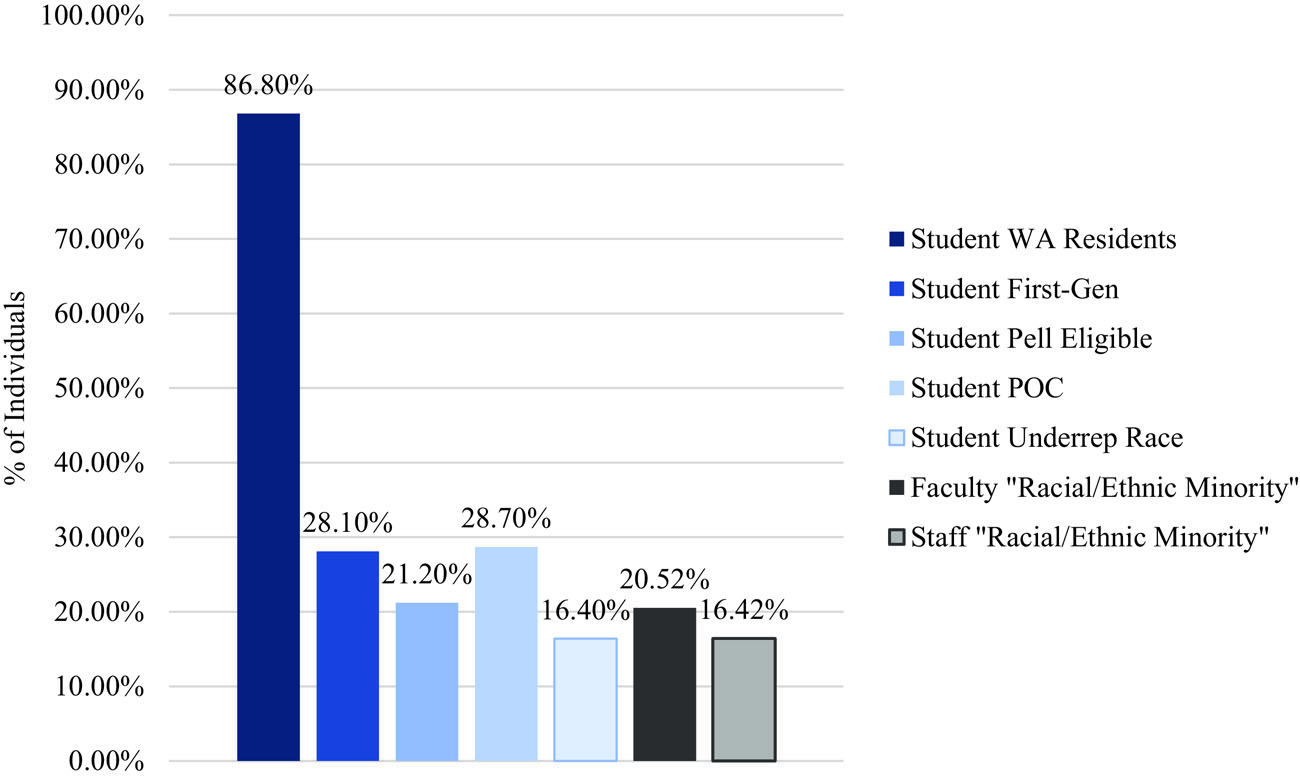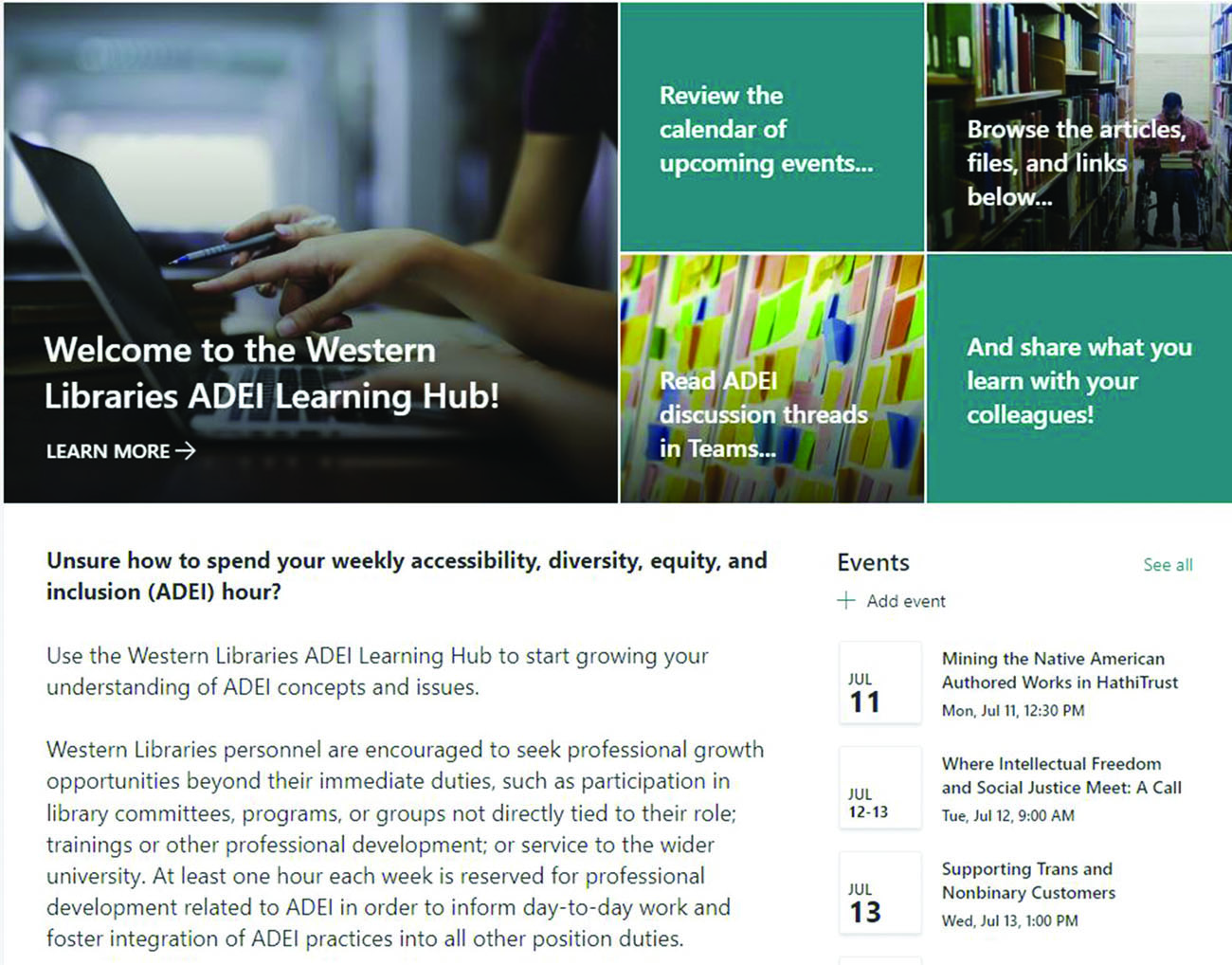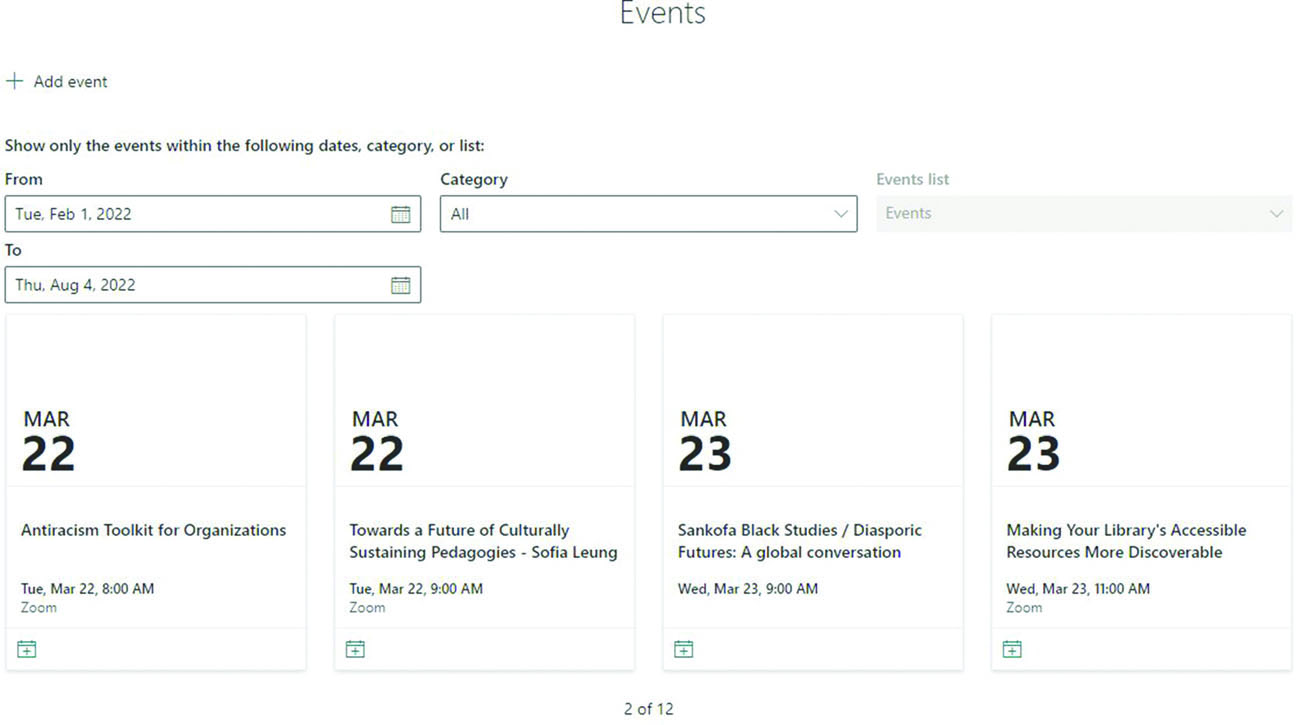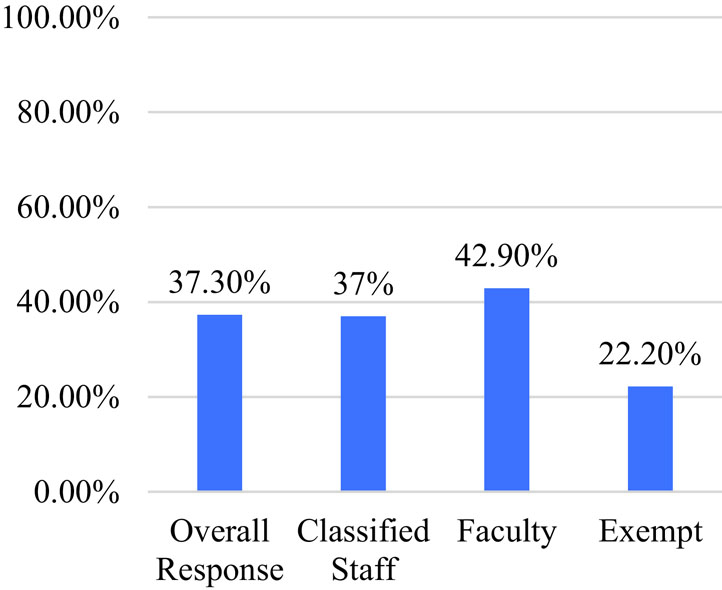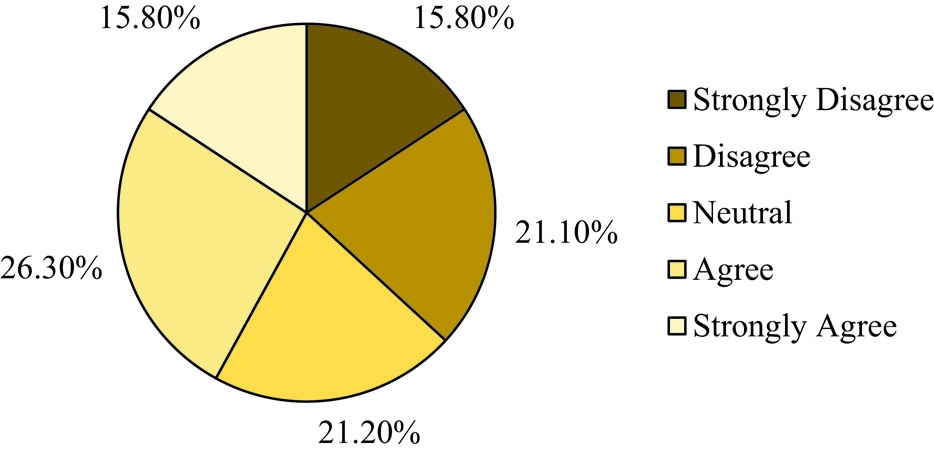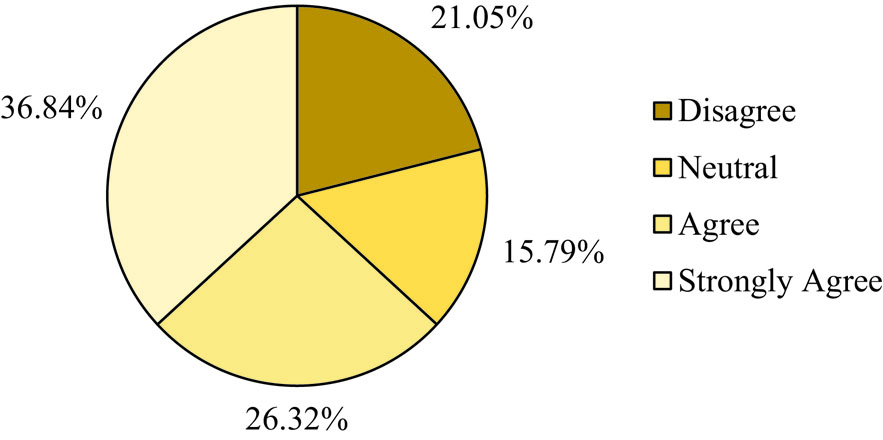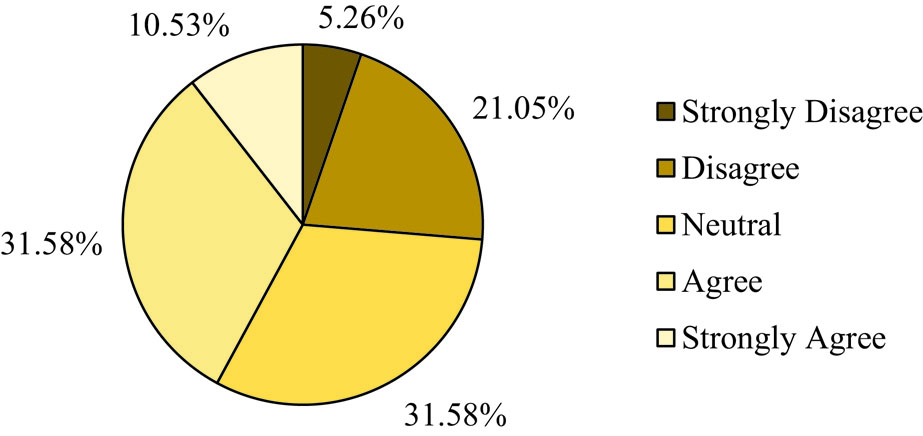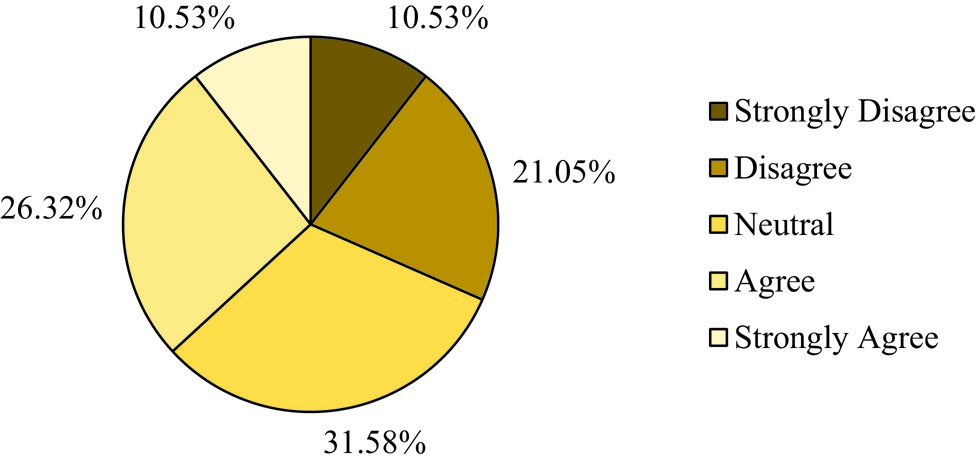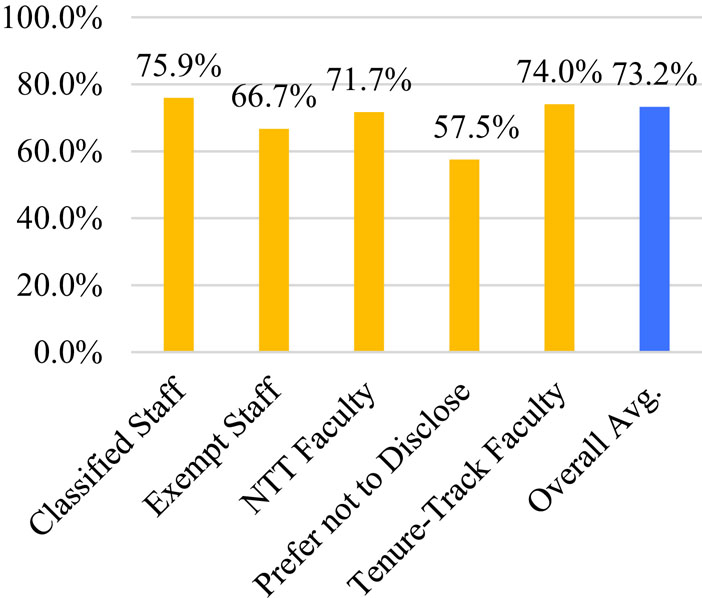Introduction
Libraries are at an existential crossroads. To fulfill our potential as transformative, socially-just organizations, we must dismantle and rebuild ourselves in a truly inclusive way. This process of radical transformation will extend beyond the competencies of the individual into the structures of librarianship itself. Nevertheless, for broader change to take root, individual library professionals need to be literate in and engaged with the concepts and challenges of accessibility, diversity, equity, and inclusion (ADEI). If each individual does not understand the scope and nature of systemic oppression and does not spend time reflecting on the issues, neither top-down initiatives nor grassroots efforts for change will succeed. Library professionals must find ways to hold themselves accountable for the foundational, individual work of ADEI learning, in order to build the personal fluency necessary to contribute to higher-level change.
At Western Washington University (Western), the Western Libraries instituted the “ADEI hour”: a weekly allotment of time in each employee’s duties dedicated to exploring and reflecting critically on ADEI issues, as well as developing ways to operationalize equity and inclusion. What the ADEI hour is not, is the final word in ADEI efforts. It is a single, modest step as part of a necessarily large organizational effort. The hour is not meant to replace broader, more transformative work. The hour is what it is: dedicated time to learn, grow, and reflect. It is a minimum, not a limit.
Nonetheless, requiring professional development and prompting true engagement are two different things. The gap between intention and impact feels particularly stark in technical services and circulation, where day-to-day work can feel too urgent to carve out time for reflection. Over the first six months that the ADEI hour was in place at Western, library leaders heard feedback that some employees’ workloads were too heavy to break from for conceptual ADEI work. Other employees found it challenging to identify relevant, useful, or good-quality training materials. For those who did find the time and resources, they still struggled to find avenues for reflection, discussion, and application. There was no clear accountability or expectation for the time. Ultimately, the ADEI hour did not always seem to be time well spent.
Faced with this disconnect, Western’s director of collections began exploring strategies to make the ADEI hour more meaningful for both the individual and the organization. This presentation covers three areas of focus in understanding and addressing the challenges Western Libraries personnel face in terms of ADEI professional development. First, the presentation describes a SharePoint-based learning portal called the ADEI Learning Hub, developed in early 2022. Second, the presentation explores an employee engagement survey used to better understand specific trends and needs related to ADEI professional development, including high-level, preliminary results. Lastly, the presentation outlines some long-term strategies for employee engagement based on the results of the earlier survey. All three components are framed in the context of Western Washington University but may provide insights on how other institutions can support employee growth—and by extension, organizational growth—in this critical area.
Western Washington University
Western Washington University is a public comprehensive university with its main campus in Bellingham, Washington. As of Fall 2021, student enrollment was 13,847 full-time equivalent. As reflected in Figure 1, just under one-third of students (28.1 percent) are first-generation, 21.1 percent are Pell eligible, 28.7 percent identify as a person of color, and 16.4 percent identify as an “underrepresented race.” 1 The vast majority (86.8 percent) are residents of the state of Washington. By comparison, as of 2020, just 20.52 percent of faculty and 16.42 percent of staff identified as part of a “Racial/Ethnic Minority.”2 Based on these demographics, it is safe to say that Western is a predominantly white institution, especially among permanent employees.
The Western Libraries, which is in some ways a microcosm of the larger organization, employs about sixty full-time personnel, including a mix of faculty, classified staff, and exempt staff. A third of the Libraries’ employees work within the Collection Services (CS) division, which includes traditional technical services activities like acquisitions, cataloging, and e-resources management, as well as access services functions like circulation, resource sharing, and course reserves. CS also includes collection assessment and stacks management. Because the director of collections oversees this division, CS was the original focus of the efforts described here; however, since early 2022 other areas of the Libraries have expressed interest in greater ADEI support, so this presentation goes beyond technical and access services alone and speaks more generally about ADEI professional development in libraries.
Short-Term Solution: The ADEI Learning Hub
The Western Libraries introduced the ADEI hour in early 2021. By late summer, the director of collections had heard from a number of colleagues that they were struggling to use the time consistently and that they wished for greater structural support for the work. Some wished for organized events, like trainings or book groups. Others asked for a curriculum to guide them and provide a common frame of reference. Based on these anecdotal needs, the director of collections set out to make ADEI professional development easier and more meaningful for CS personnel as quickly as possible.
To accomplish this, the director developed a SharePoint-based, multimedia site called the ADEI Learning Hub. The Hub is structured to accommodate a variety of learning styles, interests, and schedules, and includes:
A variety of vetted media, including text, audio, and video
Synchronous and asynchronous learning opportunities
A variety of functional areas and topics so that people can learn about ADEI concepts in relation to their specific work or more broadly
Support for a variety of comfort levels and fluencies with ADEI concepts
Clear avenues for accountability and reflection in a variety of modalities
Opportunities for employees to enact change in the organization
SharePoint, while not perfect, has been a functional, easy-to- implement platform for the Hub. Benefits of the platform include controlled access, integration with Microsoft Teams, and the ability to incorporate a variety of media into a single environment where users can filter and sort it by topic, author, and so on. Lastly, SharePoint is easy to set up, add content to, and use.
The homepage (shown in Figure 2) includes a simple, top-level navigation directing visitors to the events calendar, the library of resources, and an introductory summary. Farther down the page, there is a brief narrative orienting visitors to the site, as well as a calendar digest, a preview of new content, and the link library itself.
The events calendar (shown in Figure 3) features upcoming events—both in-person and virtual—related to ADEI. Events come from a variety of sources, including university-wide e-mails, consortium mailing lists, American Library Association division e-mail digests, newsletters, and word of mouth. The calendar takes a broad definition of ADEI, and has included events related to health equity, genocide and wartime violence, and migration and immigration, as well as more traditional library topics like accessibility, community engagement, and organizational change. Events are added to the calendar on a rolling basis.
The site’s core feature is the resource library, shown in Figure 4. As described above, it includes a mix of media, including books, videos, podcasts, articles, and interactive trainings. Each item in the resource library is categorized according to topic. The tags relate to functional areas of the library, rather than ADEI topic, so that people can locate content relevant to their work. There are a few dozen topics, including accessibility; acquisitions; assessment and data analysis; cataloging and metadata; customer service; recruitment and hiring; resource sharing; self-reflection; and more. Each resource can be tagged with as many topics as are relevant.
One final feature of the ADEI Learning Hub is its emphasis on accountability and action. The home page provides visitors with an overview of how to use the Hub, including the expectation that personnel report back on what they are learning. To make it as easy as possible, personnel are given the option to write, speak, discuss, or act. That is, they can summarize what they learned and a few concrete takeaways and share it in writing with their colleagues, share it verbally at a relevant meeting, post discussion questions and reflections in Teams, or propose a policy or procedure change to their supervisor. The intention of this portion of the site is twofold: to ask employees to provide evidence they are using their hour; more importantly, accountability measures encourage reflection, rather than just consumption of information. Hopefully this component will make the ADEI hour more meaningful and impactful over time.
The ADEI Learning Hub was launched at the beginning of March 2022 with thirty articles, chapters, and videos in the document library. Since then, new content has been added at the beginning of each month and events have been added on a rolling basis. Monthly content updates are announced on a library-wide Teams channel. There are no concrete usage numbers at this point, but employees have offered positive feedback about the site:
“We have a new regular visitor … whose first language is ASL, and I’ve already shared the webinar [from the Hub] as a professional development opportunity for student employees, and I’m signed up myself. Thank you for the work you put into this.”
“This is super cool… . Thank you.”
“I’ve been meaning to tell you how great I think the ADEI Learning Hub is! It looks great, it’s easy to navigate, the content looks fabulous—thank you for doing it!”
In the two months since the site launched, there has been a flood of suggestions for content to add, as well as ideas for site improvements. In the coming months, the director of collections hopes to establish an ADEI Learning Hub Steering Committee to guide the site’s ongoing evolution. The steering committee will help process content suggestions, as well as exploring ways to make the site more meaningful and usable. Some ideas under discussion include the creation of a content suggestion form (rather than relying on email or word of mouth), the addition of a Recommended By metadata field, and the addition of a Book Reviews section where people can engage more deeply with long-form materials. These adjustments to the Learning Hub will hopefully improve the usefulness of the site and supplement broader organizational changes that will be discussed further below.
Mid-Term Solution: Employee Engagement Survey
Development of the ADEI Learning Hub was based in part on best practices from the professional development literature. However, it was also based on a lot of assumptions about employees’ experiences with the ADEI hour. In order to implement better long-term support structures, a more formal assessment of employee engagement was needed.
The concept of employee engagement was developed more than thirty years ago by William A. Kahn. In his 1990 article, “Psychological Conditions of Personal Engagement and Disengagement at Work,” Kahn identified three dimensions that contribute to engagement: the physical (also called behavioral) dimension, the cognitive dimension, and the emotional dimension.3 This three-dimensional framework underlies most later studies, including a variety of survey instruments that attempt to measure employee engagement. Three surveys served as the basis for the employee engagement survey developed here.
The first survey incorporated into the Western Libraries’ work was the Gallup Q12 instrument, or the Gallup 12, one of the oldest and most widely known measures of employee engagement. Developed in the 1990s, the survey is based on Gallup’s research on over 2 million U.S. workers.4 The second instrument incorporated into the survey was published online in 2009 by Karen Wilson in her doctoral dissertation titled, “A Survey of Employee Engagement.”5 As part of her work studying employees at a social services agency in the Midwest United States, Wilson developed a six-question survey instrument based on the Gallup Q12, the DecisionWise Employee Engagement Survey, and a local agency-specific survey. The third instrument incorporated into the survey was the Employee Engagement Scale, or EES, published by Brad Shuck and a group of colleagues in 2017.6 In their article about the EES, Shuck, Jill L. Adelson, and Thomas G. Reio Jr. detailed a rigorous process for developing the scale and refining its validity and reliability. The scale includes twelve questions but is also available in an abbreviated six-item version that is “quicker and more manageable to deploy.”7 At Western we opted to use the abbreviated version for our work.
The final survey instrument deployed in the Western Libraries included twenty-four engagement-related questions, as well as a short grouping of questions specific to the Libraries, which were developed in collaboration with the assistant dean and the communications manager. These institution-specific questions explore current ADEI professional development practices, including obstacles preventing employees from participating fully. It is worth noting that the survey collected no personally identifying information. The only demographics gathered were employee classification; the survey software was configured not to collect IP address; and while there were a small number of free-text responses in which a respondent could reveal their identity, participants were warned of this potential. The survey text is included in the appendices.
The survey was distributed via email in March 2022 and left open for three weeks. All Libraries personnel were invited—but not required—to participate. The recruitment text is included in the appendices below. During the three-week span, the survey received nineteen responses from among the fifty-two full-time employees working for the Libraries in March 2022. Excluding the director of collections, that constitutes a 37.3 percent response rate. The highest proportion of responses were from faculty (43 percent) and the lowest proportion was from exempt personnel (22 percent). Response rates by employee classification are shown in Figure 5, below.
Library leadership is still working to understand the survey results fully, but the responses have already provided insights to supplement earlier assumptions. Western Libraries will repeat the survey again in September 2022 to see whether the landscape has changed over the spring and summer. A deeper dive into the current survey results will feed into the third and final portion of the presentation.
Long-Term Solution: Ongoing Improvement and Assessment
The results of the survey suggest that somewhere between one-third and half of employees struggle to spend even one hour a week on ADEI professional development. As Figure 6 shows, 37 percent disagree with the statement, “I spend an hour or more per week on ADEI-related professional development.” Another 21 percent feel neutral. Only 42 percent agree. Further, whether or not they use one hour per week for ADEI professional development, most employees report difficulty finding that time. As Figure 7 shows, 63 percent agreed that “It is a struggle to find time for my ADEI hour.”
In addition to having trouble finding the time, other obstacles to engagement include difficulty finding ways to share lessons learned with colleagues and incorporating ADEI concepts into organizational practice. As shown in Figure 8, more than a quarter of respondents disagreed with the statement, “I see clear avenues for sharing what I learn with my colleagues.” As shown in Figure 9, almost a third of respondents disagreed with the statement, “I see clear paths for incorporating what I learn into unit, division, or library policies and practices.”
Respondents’ qualitative responses provided additional context, revealing frustration at the lack of meaningful ADEI progress within the organization, a sense of being under-resourced, and concern about the siloed and individualistic nature of ADEI work within the Libraries. In short, the results suggest that people are struggling to find time for this important work and the struggle is exacerbated by a sense that there are not clear outlets or good next steps.
In spite of struggling with the ADEI hour, respondents averaged 73.2 percent engaged—equivalent to answering every question on a five-point Likert scale somewhere between “Neutral” and “Agree.” In other words, employees are not overwhelmingly engaged, but they are engaged, nonetheless. As illustrated in Figure 10, responses showed slightly higher engagement among classified staff and tenure-track faculty and lower engagement among other employee types. Engagement did correlate, at least slightly, with time spent on ADEI professional development, though the exact relationship is undoubtedly more nuanced than cause and effect.
Based on the results of the survey, which are too complex to summarize in a single conference presentation or proceedings, the Libraries will be exploring specific strategies to foster employee engagement related to ADEI. The exact outcomes remain to be determined. However, the author’s initial recommendations to library leadership based on the survey include:
Prioritizing time for ADEI work, especially among classified staff.
Providing clear avenues for personnel to share what they are learning.
Building mechanisms for personnel to propose and contribute to operational changes.
Recognizing personnel efforts in this area more regularly. The survey results implied that, while a lot of energy goes into encouraging use of the ADEI hour, little goes into acknowledging and celebrating the growth that is happening as a result.
Conclusion
This work is not without its shortcomings. First, it must be acknowledged that the ADEI hour, the Learning Hub, and the engagement survey are all just one step in a much longer journey. Hopefully, they are a step in the right direction. Second, there are practical limitations to the work. Survey responses were voluntary and self-reported, so it is possible that the organization’s least-engaged personnel did not participate, and that the personnel who did either over- or under-represented their own engagement. Further, the lack of demographic data makes it hard to fully interpret the results and target our efforts. Lastly, even though all three engagement surveys that were incorporated into this work were tried and tested, none seemed to quite agree with the others. In the end, the data may need to be taken with a grain of salt.
Shortcomings aside, the ADEI Learning Hub, the engagement survey, and some of the broader recommendations may still be useful to other libraries trying to affect change. If nothing else, the author hopes these efforts will make the Western Libraries a little more ready for significant change.
Appendix A. Western Libraries ADEI Professional Development Survey Recruitment Message
Dear Colleagues,
I am inviting you to participate in a research study on professional development practices related to accessibility, diversity, equity, and inclusion (ADEI). Your participation is completely voluntary.
The study will collect information about your current professional development practices related to ADEI. Information collected from this survey will be aggregated and used to gauge library employee engagement with ADEI professional development. These survey results will be compared against future surveys to determine the extent to which the Western Libraries’ efforts to facilitate ADEI professional development are successful in boosting employee engagement over time.
If you choose to participate, you will complete an electronic survey [link] that should take approximately 20 minutes. The questions will ask about your current experiences with ADEI-related professional development. To protect your privacy, no identifying information will be collected, other than information you may choose to provide via a small number of optional free-text questions. To protect your confidentiality (i.e., to keep anyone other than me from seeing your data and connecting it to you), survey responses will be stored only in a secure Qualtrics account and on a secure, university laptop. Only I will read your verbatim answers, and any public results or analysis will be in aggregate, synthesis form only.
Potential benefits of participation include better encouragement and support for ADEI professional development within the Libraries. Over time, I hope that this will lead to a more inclusive and equitable organization.
If you have any questions or concerns about this research, please don’t hesitate to reach out. I am happy to discuss it in greater depth!
If you would like to participate in the study, please complete the online survey [link] by midnight on Sunday, March 27.
Sincerely,
Madeline Kelly
Appendix B. Western Libraries ADEI Professional Development Survey Instrument
Current usage of ADEI hour
This section of the survey will ask about your current use of the dedicated 1 hour per week of accessibility, diversity, equity, and inclusion (ADEI) professional development time. There are 9 questions in this section.
Please answer the following by indicating the extent to which you agree or disagree with how the statement describes how you feel about your ADEI professional development. (Strongly Disagree = 1, Disagree, Neutral, Agree, Strongly Agree = 5)
I spend an hour or more per week on ADEI-related professional development.
It is easy to find materials to focus on during my ADEI hour.
I am confident the materials I find during my ADEI hour are relevant and useful.
I see clear connections between my work and the ADEI concepts I’m learning.
It is a struggle to find time for my ADEI hour.
I see clear avenues for sharing what I learn with my colleagues.
I see clear paths for incorporating what I learn into unit, division, or library policies and practices.
What ADEI resources do you already regularly engage with?
If you would like to add context to any of the above answers, please do so here:
Engagement with ADEI professional development
This section of the survey will ask about your feelings and experiences related to ADEI professional development. There are 20 questions in this section.
Please answer the following by indicating the extent to which you agree or disagree with how the statement describes how you feel about your ADEI professional development. (Strongly Disagree = 1, Disagree, Neutral, Agree, Strongly Agree = 5)
-
10.
I am very focused when I am learning about ADEI concepts.
-
11.
I give ADEI professional development a lot of attention.
-
12.
Learning about ADEI concepts has a great deal of personal meaning to me.
-
13.
I feel a strong sense of belonging when I am learning about ADEI concepts.
-
14.
I really push myself to learn more about ADEI than what is expected of me.
-
15.
I work harder than expected to help the organization become more inclusive.
-
16.
I know what is expected of me in terms of ADEI professional development.
-
17.
I have the materials and equipment I need to learn about ADEI concepts.
-
18.
When learning about ADEI concepts I have the opportunity to exercise my strengths.
-
19.
In the last seven days, I have received recognition or praise for growing or applying ADEI knowledge.
-
20.
My supervisor, or someone at work, seems to care about my personal experience with ADEI professional development.
-
21.
There is someone at work who encourages my ADEI learning and growth.
-
22.
My opinions about ADEI growth and learning seem to count.
-
23.
The mission/purpose of the Western Libraries makes me feel that ADEI professional development is important.
-
24.
My co-workers are committed to ADEI learning.
-
25.
I have a colleague with whom I like to discuss ADEI concepts and opportunities.
-
26.
In the last six months, someone has talked to me about my ADEI professional development.
-
27.
This last year, I have had opportunities to learn and grow my ADEI knowledge and skills.
-
28.
The people I work with do a good job growing their ADEI skills and knowledge.
-
29.
I will still be learning about ADEI concepts two years from now.
Respondent demographics
This section of the survey will ask for some demographic information about you. You are not required to respond. There is 1 question in this section.
-
30.
Your employee classification: [classified staff] [exempt staff] [faculty]
Acknowledgments
This presentation and paper were prepared on the ancestral homelands of the Coast Salish Peoples, who have lived in the Salish Sea basin, throughout the San Juan Islands and the North Cascades watershed, from time immemorial. The author would like to express the deepest respect and gratitude for her Indigenous neighbors, the Lummi Nation and Nooksack Tribe, for their enduring care and protection of our shared lands and waterways. It is also worth noting the author’s own position of privilege as a white, cisgender, able-bodied faculty librarian, as well as the fact that the author is not an expert at transforming racist, sexist, ableist exclusionary structures. She is an enthusiast and committed to this work, but still learning and growing.
Contributor Note
Madeline Kelly is Director of Collections, Western Washington University, Bellingham, Washington.
- “Enrollment Details,” Office of Institutional Effectiveness, Western Washington University, accessed May 6, 2022, https://oie.wwu.edu/detailed-student-enrollment/. ⮭
- “Summary of Faculty & Staff Demographics,” Accessibility, Diversity, Equity & Inclusion, Western Washington University, accessed May 6, 2022, https://www.wwu.edu/diversity. ⮭
- William A. Kahn, “Psychological Conditions of Personal Engagement and Disengagement at Work,” Academy of Management Journal 33, no. 4 (December 1990): 692–724, https://doi.org/10.5465/256287. ⮭
- “Gallup’s Q12 Employee Engagement Survey,” Gallup, Inc., accessed April 13, 2022, https://www.gallup.com/workplace/356063/gallup-q12-employee-engagement-survey.aspx. ⮭
- Karen Wilson, “A Survey of Employee Engagement” (PhD diss., University of Missouri—Columbia, 2009), https://doi.org/10.32469/10355/6137. ⮭
- Brad Shuck, Jill L. Adelson, and Thomas G. Reio Jr., “The Employee Engagement Scale: Initial Evidence for Construct Validity and Implications for Theory and Practice,” Human Resource Management 56, no. 6 (November/December 2017): 953–77, https://doi.org/10.1002/hrm.21811. ⮭
- Brad Shuck, email to author, February 4, 2022. ⮭

